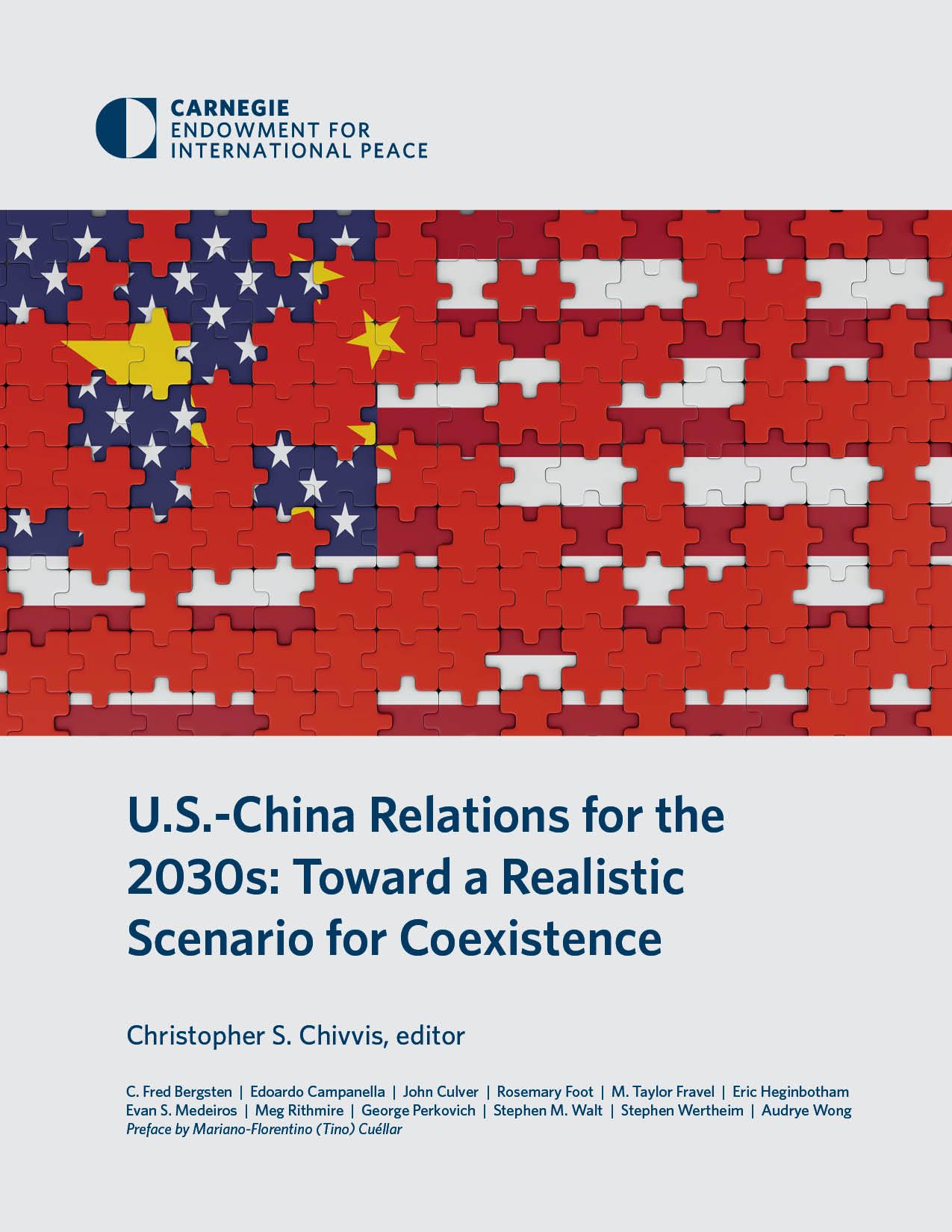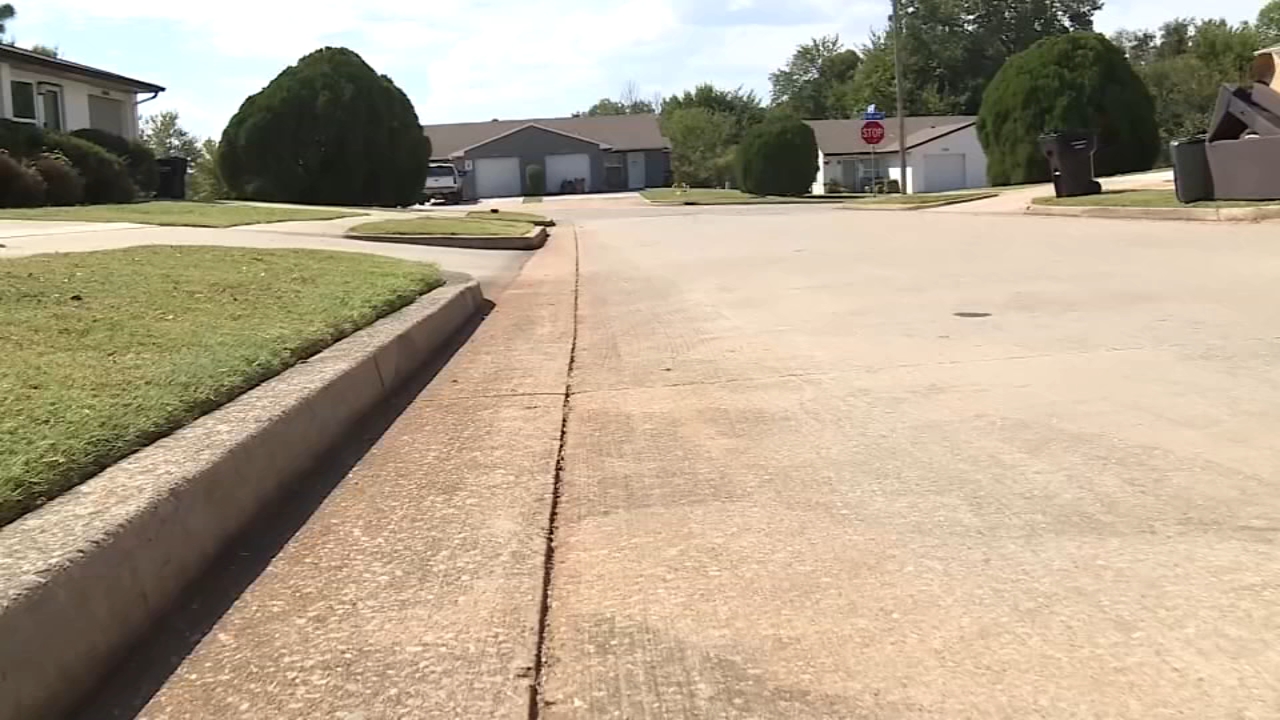Report on Federal Criminal Justice Policies and Their Impact on Sustainable Development Goals
Last Updated: July 25, 2025
Executive Summary
This report analyzes recent actions undertaken by the federal administration concerning the United States criminal legal system. These actions are evaluated based on their alignment with the United Nations Sustainable Development Goals (SDGs), with a significant focus on SDG 16 (Peace, Justice and Strong Institutions), SDG 10 (Reduced Inequalities), SDG 3 (Good Health and Well-being), and SDG 5 (Gender Equality). The findings indicate a systematic divergence from internationally agreed-upon goals for creating safer, more just, and inclusive societies. Policies appear to favor punitive measures over preventative solutions, diminish institutional transparency, exacerbate inequalities for vulnerable populations, and degrade conditions of confinement, thereby undermining progress across multiple SDGs.
Analysis of Federal Actions in Relation to Sustainable Development Goals (SDGs)
SDG 16: Peace, Justice, and Strong Institutions
A primary objective of SDG 16 is to promote the rule of law, ensure equal access to justice, and build effective, accountable, and inclusive institutions. Recent federal actions present significant challenges to achieving these targets.
Erosion of Rule of Law and Access to Justice (Target 16.3)
- The administration has reportedly incarcerated hundreds of immigrants in El Salvador, denying them due process rights guaranteed under the Constitution. This includes ignoring a unanimous Supreme Court ruling ordering the return of Kilmar Abrego Garcia.
- The arrest of a Wisconsin county judge by the FBI is viewed as an action to intimidate the judiciary, a key check on executive power, thereby undermining the rule of law.
- Administration officials have stated they are “actively looking” at suspending the Writ of Habeas Corpus for undocumented individuals, a foundational due process protection against unlawful imprisonment.
Increased Reliance on Punitive Measures over Violence Prevention (Target 16.1)
- An executive order ended the moratorium on the federal death penalty, and the Attorney General has begun seeking new death sentences.
- A memorandum from the Attorney General directs federal prosecutors to “charge and pursue the most serious, readily provable offenses,” defined as those with the longest mandatory minimum sentences, reversing previous guidance aimed at reducing the use of such sentences.
- Legislation was signed to permanently classify all fentanyl-related substances as Schedule 1, instituting severe criminal penalties including mandatory minimums and hindering research into overdose treatments.
- An executive order directs the development of a plan to use military personnel and equipment for domestic law enforcement.
Diminished Institutional Accountability and Transparency (Target 16.6)
- An executive order was signed to limit inquiries into whether federal policies have a disparate racial impact.
- The Bureau of Justice Statistics (BJS) has proposed or enacted changes to national surveys that eliminate or alter questions related to the gender identity of crime victims, making it more difficult to track violence against transgender individuals.
- An executive order shuttered the National Law Enforcement Accountability Database, a tool designed to track police misconduct.
- The Department of Justice has moved to end or has ended federal consent decrees with multiple police departments, including Albuquerque, Minneapolis, and Louisville, and has ceased investigations into others. These decrees are a primary mechanism for federal oversight of unconstitutional policing practices.
SDG 10: Reduced Inequalities
SDG 10 calls for reducing inequality within and among countries by promoting the inclusion of all, irrespective of status, and ensuring equal opportunity. Several policies directly contravene this goal by targeting marginalized groups.
Policies with Disparate Impacts on Vulnerable Populations (Targets 10.2 & 10.3)
- Executive orders specifically target transgender people in federal prisons by ending gender-affirming care, mandating that trans women be housed in men’s facilities, and removing protections under the Prison Rape Elimination Act (PREA). A federal judge has temporarily blocked this order.
- The Department of Justice rescinded $1.5 million in grants to the Maine Department of Corrections after it refused to move a transgender woman to a men’s prison.
- The administration’s focus on punitive immigration enforcement and the removal of due process protections disproportionately affects non-citizens.
SDG 3: Good Health & Well-being and SDG 5: Gender Equality
These goals focus on ensuring healthy lives and promoting gender equality, including ending all forms of discrimination and violence against women and girls. Recent funding and policy changes undermine progress in these areas, particularly for incarcerated populations and victims of violence.
Undermining Health and Support Systems (Targets 3.5, 3.8, 5.2)
- The Department of Health and Human Services cancelled or revoked $11.4 billion in grants for substance use disorder and mental health services.
- The Substance Abuse and Mental Health Services Administration (SAMHSA) has faced massive cuts to funding and staffing.
- The Department of Justice eliminated all funding to the PREA Resource Center, which supports efforts to prevent sexual assault in correctional facilities.
- Funding has been frozen for programs supporting victims of domestic violence through the Office on Violence Against Women.
Worsening Conditions and Healthcare Access in Detention (Targets 3.8 & 5.1)
- Federal Communications Commission appointees postponed rules designed to limit the high cost of phone and video calls for incarcerated people.
- An executive order was rescinded that had prohibited the Bureau of Prisons from contracting with private prison operators.
- The Bureau of Prisons changed its calculation of sentence credits, resulting in longer periods of incarceration for many federal prisoners.
Reversal of Progress on Other Key SDGs
Actions have also negatively impacted goals related to poverty (SDG 1), education (SDG 4), and sustainable communities (SDG 11) by dismantling proven social programs.
Impeding Solutions for Homelessness, Education, and Community Safety (SDG 1, 4, 11)
- Homelessness and Community Safety (SDG 1, 11):
- The administration effectively shuttered the Interagency Council on Homelessness, undermining the “Housing First” model, a proven solution for reducing homelessness and incarceration.
- An executive order was signed that would push states to criminalize homelessness and mental illness.
- Byrne-JAG funding, a major source of federal justice funding, is now prohibited from being used for violence-prevention programs.
- Hundreds of Department of Justice grants to local organizations for violence prevention, reentry services, and victim support have been eliminated across the country, totaling tens of millions of dollars.
- Education and Digital Equity (SDG 4):
- The “Fresh Start” program, which helped incarcerated students qualify for Pell Grants to pursue higher education, was terminated.
- A promise was made to cut grants authorized by the Digital Equity Act of 2021, which fund programs providing internet access to incarcerated people.
Which SDGs are addressed or connected to the issues highlighted in the article?
SDG 3: Good Health and Well-being
- The article highlights significant funding cuts to mental health and substance abuse treatment programs. The cancellation of “$11.4 billion in grants designed to address substance use disorder and mental health issues” and the gutting of the Substance Abuse and Mental Health Services Administration (SAMHSA) directly impact public health infrastructure. Furthermore, the article notes the end of gender-affirming care for transgender people in federal prisons, which is a denial of essential medical services.
SDG 5: Gender Equality
- The article details policies that discriminate based on gender and gender identity. Executive orders targeting transgender people, such as mandating that “trans women be held in men’s prisons” and eliminating protections under the Prison Rape Elimination Act (PREA), undermine the safety and equality of this group. Additionally, the freezing of funds for programs supporting victims of domestic violence and the elimination of funding for the PREA Resource Center directly harm efforts to combat gender-based violence.
SDG 10: Reduced Inequalities
- The article describes numerous actions that exacerbate inequalities. Policies targeting immigrants, such as sending them to El Salvador “without being afforded the due process rights,” and the administration’s intent to gut inquiries into whether federal policies have a “disparate impact on… people of color” directly relate to increasing inequality based on origin and race. The elimination of questions about gender identity in Bureau of Justice Statistics (BJS) surveys makes it harder to understand and address the specific challenges faced by transgender individuals within the justice system.
SDG 11: Sustainable Cities and Communities
- The article discusses the undermining of solutions that make communities safer and more inclusive. The shuttering of the Interagency Council on Homelessness and the undermining of the “Housing First model” directly impact access to adequate housing. Furthermore, extensive cuts to violence prevention programs in cities like Baltimore, Chicago, and Oklahoma City, and prohibiting Byrne-JAG funds from being used for such programs, work against the goal of creating safe and resilient communities.
SDG 16: Peace, Justice and Strong Institutions
- This is the most central SDG in the article. The text is almost entirely focused on the weakening of just, accountable, and transparent institutions. The section “Eviscerating due process and the rule of law” details actions like ignoring a Supreme Court ruling and considering the suspension of Habeas Corpus. The push for “extreme sentencing,” the reversal of policies to reduce mandatory minimums, and the elimination of oversight mechanisms like the National Law Enforcement Accountability Database and consent decrees all represent a move away from effective, accountable, and transparent justice institutions.
What specific targets under those SDGs can be identified based on the article’s content?
SDG 3: Good Health and Well-being
- Target 3.5: Strengthen the prevention and treatment of substance abuse, including narcotic drug abuse and harmful use of alcohol. This target is directly relevant due to the article’s mention of the administration cancelling “$11.4 billion in grants designed to address substance use disorder,” cutting funding to SAMHSA, and defunding recovery courts in North Carolina.
SDG 5: Gender Equality
- Target 5.1: End all forms of discrimination against all women and girls everywhere. The executive orders that “targeted transgender people,” specifically mandating trans women be housed in men’s prisons, are a clear example of a discriminatory policy that this target aims to eliminate.
- Target 5.2: Eliminate all forms of violence against all women and girls in the public and private spheres. This is addressed by the article’s mention of the Department of Justice’s Office on Violence Against Women freezing funding for domestic violence support programs and the elimination of all funding for the Prison Rape Elimination Act (PREA) Resource Center, which supports victims of sexual violence in prisons.
SDG 10: Reduced Inequalities
- Target 10.2: By 2030, empower and promote the social, economic and political inclusion of all, irrespective of… race, ethnicity, origin… or other status. The article highlights policies that work against this target, such as denying due process to immigrants and signing an executive order to “gut inquiries into whether federal programs and policies have a disparate impact on… people of color.”
- Target 10.3: Ensure equal opportunity and reduce inequalities of outcome, including by eliminating discriminatory laws, policies and practices. The reversal of guidance to reduce the use of mandatory minimums, which disproportionately affect minority communities, and the executive orders targeting transgender people are examples of policies that increase inequalities of outcome, contrary to this target.
SDG 11: Sustainable Cities and Communities
- Target 11.1: By 2030, ensure access for all to adequate, safe and affordable housing and basic services and upgrade slums. The article points to the administration effectively shuttering the “Interagency Council on Homelessness” and undermining the “Housing First model,” which are key strategies for providing housing to vulnerable populations.
SDG 16: Peace, Justice and Strong Institutions
- Target 16.3: Promote the rule of law at the national and international levels and ensure equal access to justice for all. The article’s entire first section, “Eviscerating due process and the rule of law,” is dedicated to this. Specific examples include ignoring a Supreme Court ruling, intimidating judges, and the Attorney General’s memo directing prosecutors to “charge and pursue the most serious, readily provable offenses,” which undermines equal access to justice in favor of harshness.
- Target 16.6: Develop effective, accountable and transparent institutions at all levels. This target is undermined by actions described in the article, such as “shuttering the National Law Enforcement Accountability Database,” ending consent decrees with police departments, and the BJS eliminating questions from surveys that provide transparency on the experiences of specific groups (e.g., transgender people).
- Target 16.b: Promote and enforce non-discriminatory laws and policies for sustainable development. The article provides examples of the opposite, such as the executive order targeting transgender people in federal prisons and the move to end inquiries into the “disparate impact” of federal policies on people of color.
Are there any indicators mentioned or implied in the article that can be used to measure progress towards the identified targets?
SDG 3: Good Health and Well-being
- Implied Indicator: Amount of government funding allocated to mental health and substance abuse prevention and treatment. The article provides a specific figure of “$11.4 billion” in cancelled or revoked grants, which can be used as a negative indicator of progress.
SDG 5: Gender Equality
- Implied Indicator: Existence of policies and funding to prevent and address gender-based violence. The article mentions the “frozen funding” for domestic violence programs and the elimination of funding for the PREA Resource Center, serving as negative indicators.
- Implied Indicator: Existence of laws and policies that ensure non-discrimination against transgender persons. The executive order mandating trans women be held in men’s prisons is a specific policy that can be tracked as an indicator of regression.
SDG 10: Reduced Inequalities
- Implied Indicator: Proportion of the population reporting having personally felt discriminated against or harassed on the basis of a ground of discrimination prohibited under international human rights law. The gutting of “disparate impact” inquiries and the removal of gender identity questions from BJS surveys are actions that would make this indicator impossible to measure, implying a negative trend.
SDG 16: Peace, Justice and Strong Institutions
- Indicator 16.3.1: Proportion of victims of violence in the previous 12 months who reported their victimization to competent authorities or other officially recognized conflict resolution mechanisms. The article implies this would be harder to track, as the BJS has removed questions from the National Criminal Victimization Survey.
- Indicator 16.3.2: Unsentenced detainees as a proportion of overall prison population. While not directly stated, policies that “eviscerate due process” and suspend Habeas Corpus would likely lead to a higher proportion of unsentenced detainees.
- Implied Indicator: Number of jurisdictions with independent national human rights institutions in compliance with the Paris Principles. The shuttering of the National Law Enforcement Accountability Database and the ending of federal consent decrees indicate a weakening of accountability institutions.
- Implied Indicator: Number of people sentenced under mandatory minimums or the death penalty. The Attorney General’s memo to pursue the “most serious” offenses and the ending of the death penalty moratorium point to an increase in these numbers.
SDGs, Targets, and Indicators Analysis
| SDGs | Targets | Indicators (Mentioned or Implied in Article) |
|---|---|---|
| SDG 3: Good Health and Well-being | 3.5: Strengthen the prevention and treatment of substance abuse. | Amount of federal funding for substance use disorder and mental health grants (e.g., the mentioned “$11.4 billion” in cancelled grants). |
| SDG 5: Gender Equality | 5.1: End all forms of discrimination against all women and girls everywhere.
5.2: Eliminate all forms of violence against all women and girls. |
Existence of policies targeting transgender people (e.g., housing trans women in men’s prisons).
Level of funding for programs supporting victims of domestic and sexual violence (e.g., “frozen funding” for OVW programs, defunding of PREA Resource Center). |
| SDG 10: Reduced Inequalities | 10.2: Promote the social, economic and political inclusion of all.
10.3: Ensure equal opportunity and reduce inequalities of outcome. |
Existence of mechanisms to review the “disparate impact” of policies on people of color.
Inclusion of gender identity questions in official justice system surveys (e.g., BJS surveys). |
| SDG 11: Sustainable Cities and Communities | 11.1: Ensure access for all to adequate, safe and affordable housing. | Government support for homelessness reduction models (e.g., the undermining of the “Housing First model”).
Amount of federal funding for community-based violence prevention programs (e.g., specific cuts mentioned for MA, OK, VA, etc.). |
| SDG 16: Peace, Justice and Strong Institutions | 16.3: Promote the rule of law… and ensure equal access to justice for all.
16.6: Develop effective, accountable and transparent institutions. 16.b: Promote and enforce non-discriminatory laws and policies. |
Number of people held without due process (e.g., immigrants sent to El Salvador).
Number of federal death penalty sentences sought. Existence of a national police misconduct database. Number of active federal consent decrees with law enforcement agencies. |
Source: prisonpolicy.org






